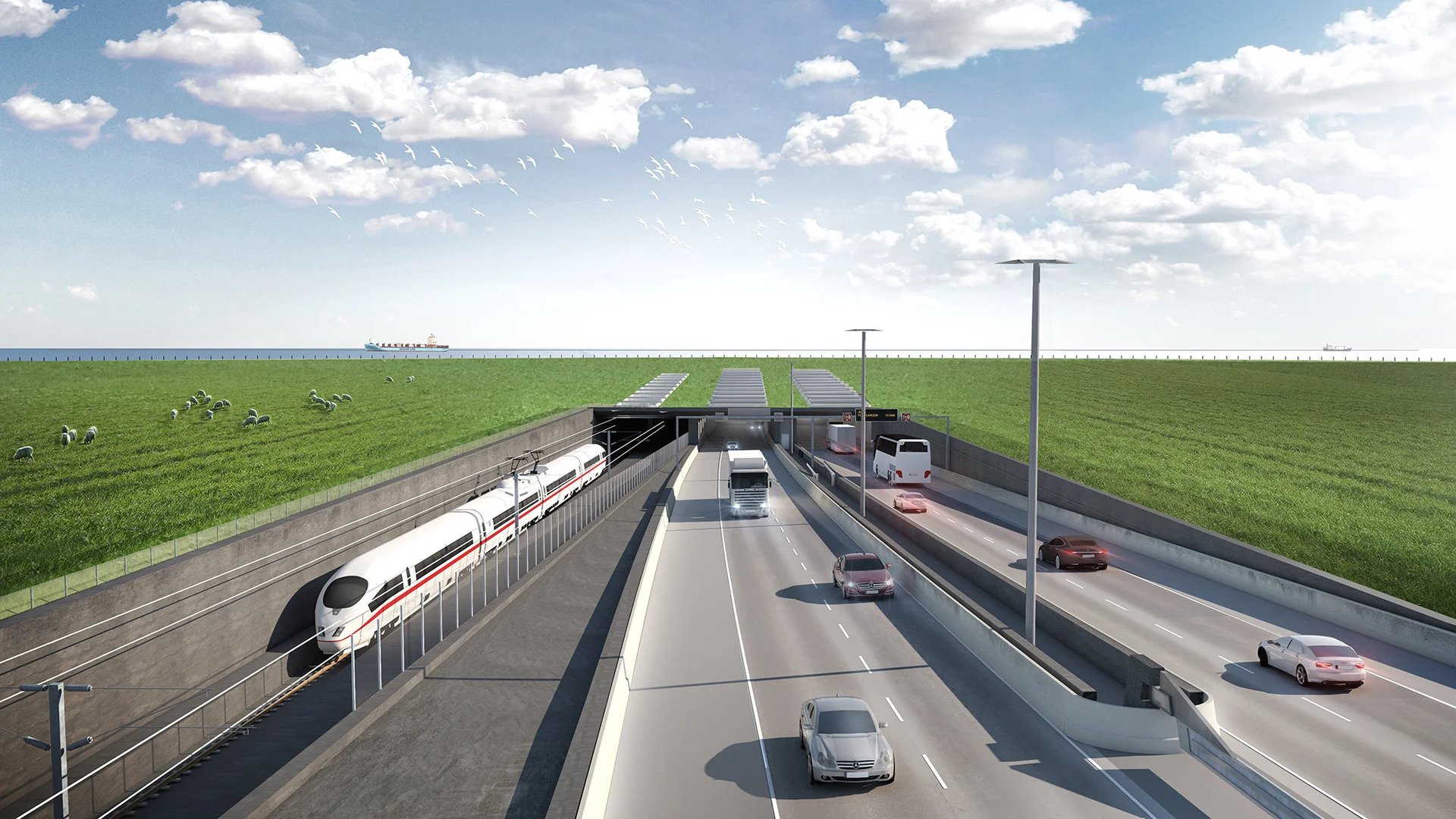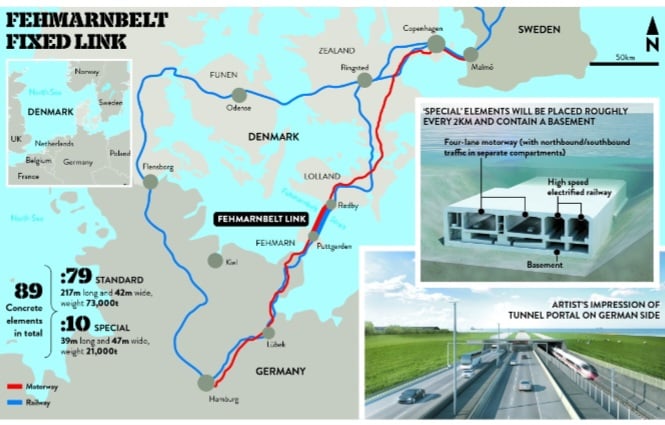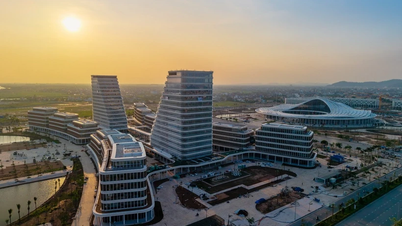(CLO) Under the Baltic Sea, south of Denmark, one of Europe's greatest engineering wonders is gradually taking shape.
The Fehmarnbelt Tunnel – a €7.4 billion project – will connect Denmark and Germany, opening up a completely new road and rail route that will dramatically change the region's transport map.
At 18km long, the Fehmarnbelt is not only the world’s longest road and rail tunnel, but also the longest submerged tunnel ever built. Unlike the Channel Tunnel between England and France, which was dug through the ground, the Fehmarnbelt was assembled from precast concrete sections, which were then lowered into a trench on the seabed and buried under sand and mud.

The Fehmarnbelt tunnel will open two railway lines and a pair of dual-lane highways under the Baltic Sea. Photo: Femern A/S
In February, the first components of the tunnel left the factory in Rødbyhavn, Denmark, marking the beginning of a challenging journey.
The entire tunnel is expected to be completed by 2029. Each concrete section is 217 meters long, 42 meters wide, 9 meters high, and weighs up to 73,000 tons - equivalent to 10 Eiffel Towers. A total of 79 standard sections and 10 special sections (39 meters long, containing the electrical system) will be precisely matched to form an underground route 40 meters deep under the sea.
The project required a huge infrastructure. The tunnelling plant in Rødbyhavn is the world’s largest tunnelling facility, operating continuously to complete a 217-metre section every nine weeks. Once cast, the sections are quality-checked and their internal systems are installed before being sent into the water.

The tunnel will connect Germany, Denmark and Sweden.
Lowering the tunnel sections into the sea is a major engineering challenge. Two special buoys, “Ivy 1” and “Ivy 2,” will assist in the process by balancing and precisely positioning each element in the prepared trench. Using a cable system of more than 200 km and underwater surveillance cameras, engineers can place each concrete section with an error of just 12 mm.
The Fehmarnbelt tunnel will not only significantly reduce travel times, but will also boost tourism and the economy in the region. When the tunnel is operational, the car journey between Denmark and Germany will be reduced from 45 minutes by ferry to 10 minutes, while the train journey from Hamburg to Copenhagen will take around 2.5 hours instead of nearly 5 hours today.
Despite the economic benefits, the project has been controversial in terms of its environmental impact. Several organizations have tried to block the project due to concerns about its impact on marine and coastal ecosystems, but the lawsuits have been dismissed by German courts. To mitigate the negative impacts, Femern A/S – the company responsible for the project – has pledged to create new natural areas to compensate for the affected land.
Ngoc Anh (according to CNN, Femern A/S)
Source: https://www.congluan.vn/sieu-du-an-duong-ham-duoi-bien-se-thay-doi-ban-do-giao-thong-chau-au-post338302.html


![[Photo] Prime Minister Pham Minh Chinh receives Ambassador of the French Republic to Vietnam Olivier Brochet](https://vphoto.vietnam.vn/thumb/1200x675/vietnam/resource/IMAGE/2025/5/13/f5441496fa4a456abf47c8c747d2fe92)
![[Photo] President Luong Cuong attends the inauguration of the international container port in Hai Phong](https://vphoto.vietnam.vn/thumb/1200x675/vietnam/resource/IMAGE/2025/5/13/9544c01a03e241fdadb6f9708e1c0b65)
![[Photo] President Luong Cuong awarded the title "Heroic City" to Hai Phong city](https://vphoto.vietnam.vn/thumb/1200x675/vietnam/resource/IMAGE/2025/5/13/d1921aa358994c0f97435a490b3d5065)


![[Photo] Many people in Hanoi welcome Buddha's relics to Quan Su Pagoda](https://vphoto.vietnam.vn/thumb/1200x675/vietnam/resource/IMAGE/2025/5/13/3e93a7303e1d4d98b6a65e64be57e870)



























































































Comment (0)